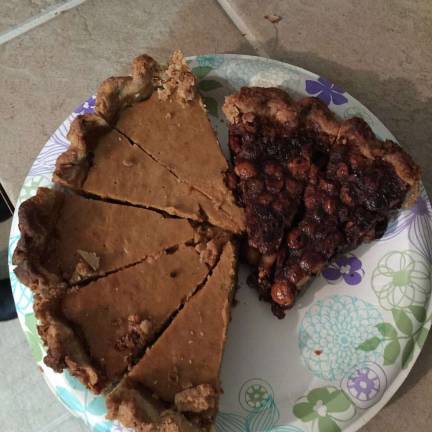During this festive holiday season, managing your diabetes can be especially stressful due to food temptations, parties, travel and overall disruption of your daily routine. However, it is equally important to enjoy and celebrate the holidays with family and friends and to not let your diabetes discourage you.
First, it’s okay to slip up sometimes, but just stay motivated and then get back on track with your next meal. A day or two of indulging generally shouldn’t be a problem. And don’t think of it as a failure either. Try to avoid skipping meals and then splurging for a feast as you are more likely to overeat and your body will have a harder time handling a larger carbohydrate or sugar load. The timing of your medications will also need to be adjusted to avoid the risk of low blood sugar. If possible, check your blood sugar more often and discuss medication changes with your health care provider. If you are taking insulin or other medications with hypoglycemia risk (glipizide, glimepiride, repaglinide, among others), make sure to check your sugar before driving or doing any strenuous activity.
Here are some suggestions to keep in mind:• Make smart switches between food items. For example, if you plan to try dessert, eat less of other carbs (potatoes, bread, pasta or rice). And if presented with multiple starchy foods, try to just take a spoonful or bite of each.
• Avoid or limit alcohol and take it with your meal whenever possible because moderate alcohol intake can have a blood sugar-lowering effect. Stick to calorie-free drinks and avoid punch or mixed drinks.
• Start with protein first and then carbs afterwards. Recent studies have shown that eating protein before carbohydrates reduces your post-meal blood sugar spike.
• While cooking or preparing food, avoid excessive sampling. After meals, avoid grazing and put the food right away.
• Read the nutrition label whenever possible and focus on the carbohydrates (not just the sugars) for a given serving size. Ideally, for a full meal, aim for no more than 45-60 grams of carbs. And for a snack, no more than 15-20 grams of carbs, with no more than one snack per day.
• Downloading mobile apps on your phone can help you estimate the carbohydrates.
It’s helpful to take your family out for a walk after a big meal or do some extra walking or climbing stairs within your home. Sleep is also important, so continue to get 7 to 8 hours per night to avoid overeating due to lethargy.
Especially when you are trying a new food, you can check your blood sugar before you eat and then about 2 to 3 hours after to get a sense of how much that food affects your sugar. This can be empowering and allow you to be in more control of your choices. It helps to focus on dishes that are “special” or “traditional.”
Some healthy food hacks: • Substitute pumpkin pie instead of pecan pie.
• Substitute olive oil for butter.
• Have a baked or boiled potato instead of mashed potatoes.
• Minimize fried foods.
• Generally, fruits with peels or rinds that you need to skin tend to be more sugary, such as bananas, oranges, nectarines, watermelon, pineapple, honeydew and cantaloupe. So eat more berries, pears and apples.
Remember, most people are very understanding when it comes to managing diabetes, so if you’re going to an event ask the host/hostess if you can bring your own light, healthy dish to the party. There are some great low-sugar recipes from the American Diabetes Association at https://www.diabetesfoodhub.org/.
And always, if you don’t feel well or are having trouble, don’t hesitate to contact your physician. We are here to help you get through it all.
Dr. Rahul Agarwal is an Assistant Professor in the Department of Medicine, The Division of Endocrinology, Diabetes and Bone Disease at Mount Sinai St. Luke’s and Mount Sinai West.

